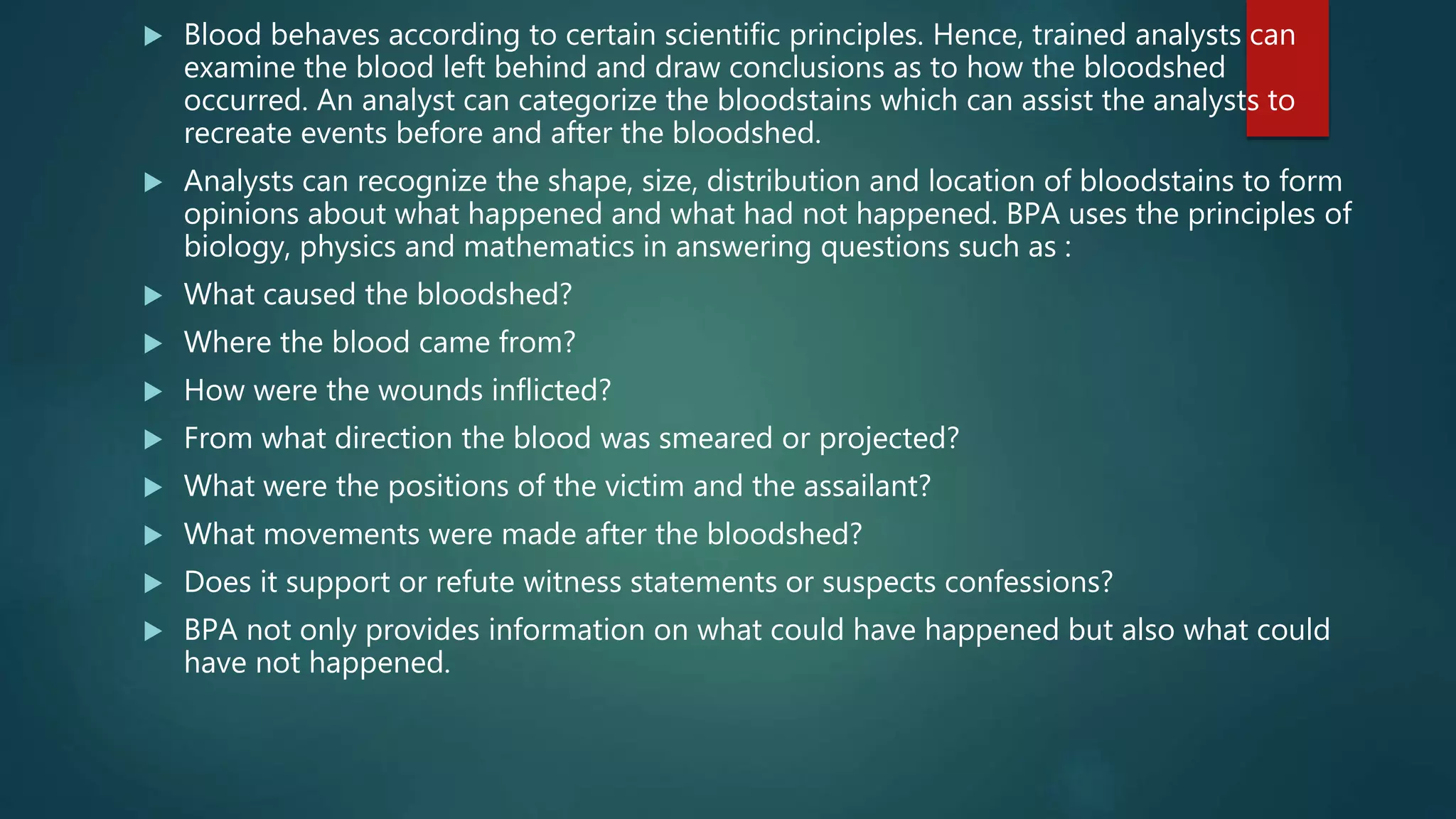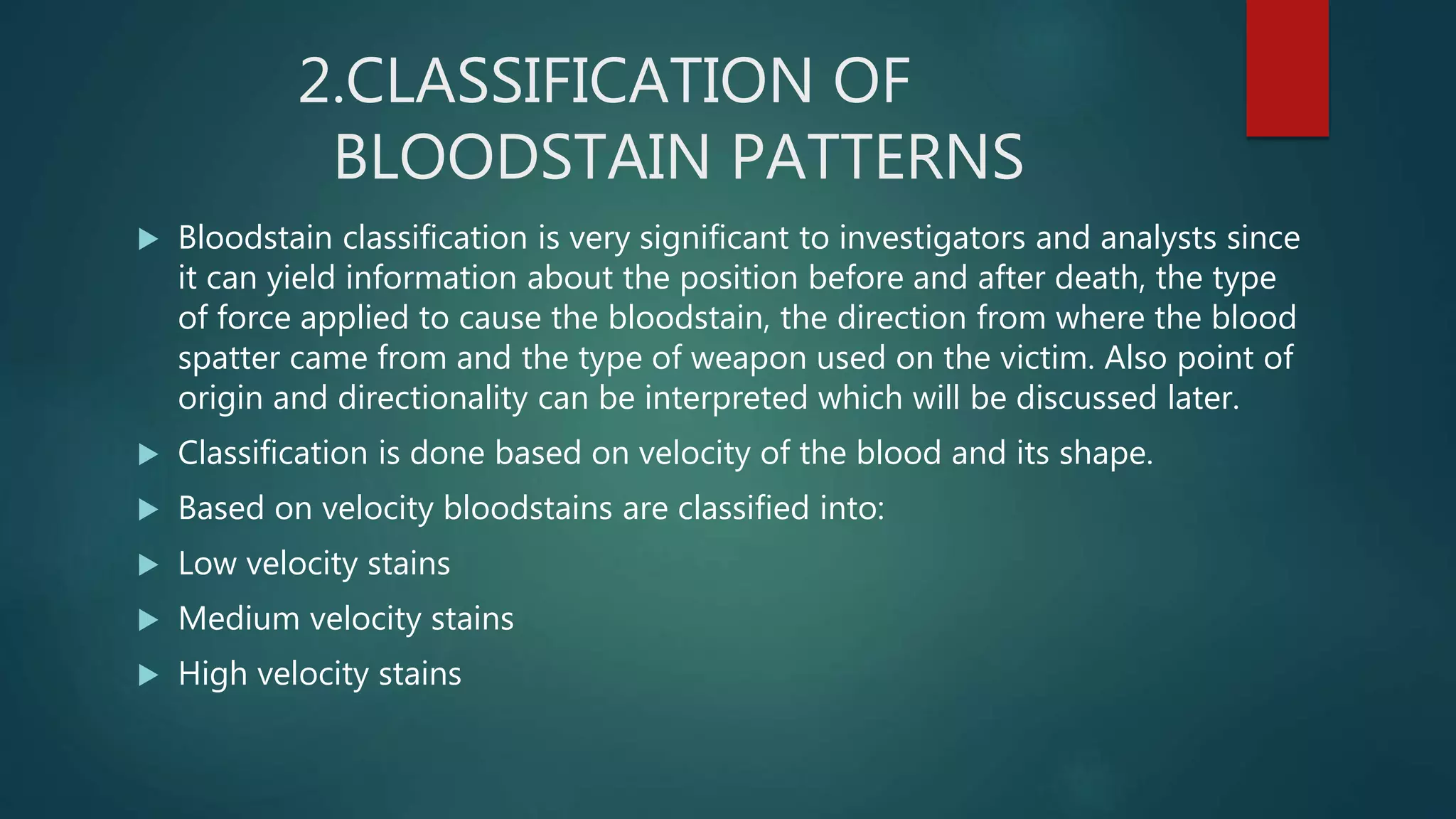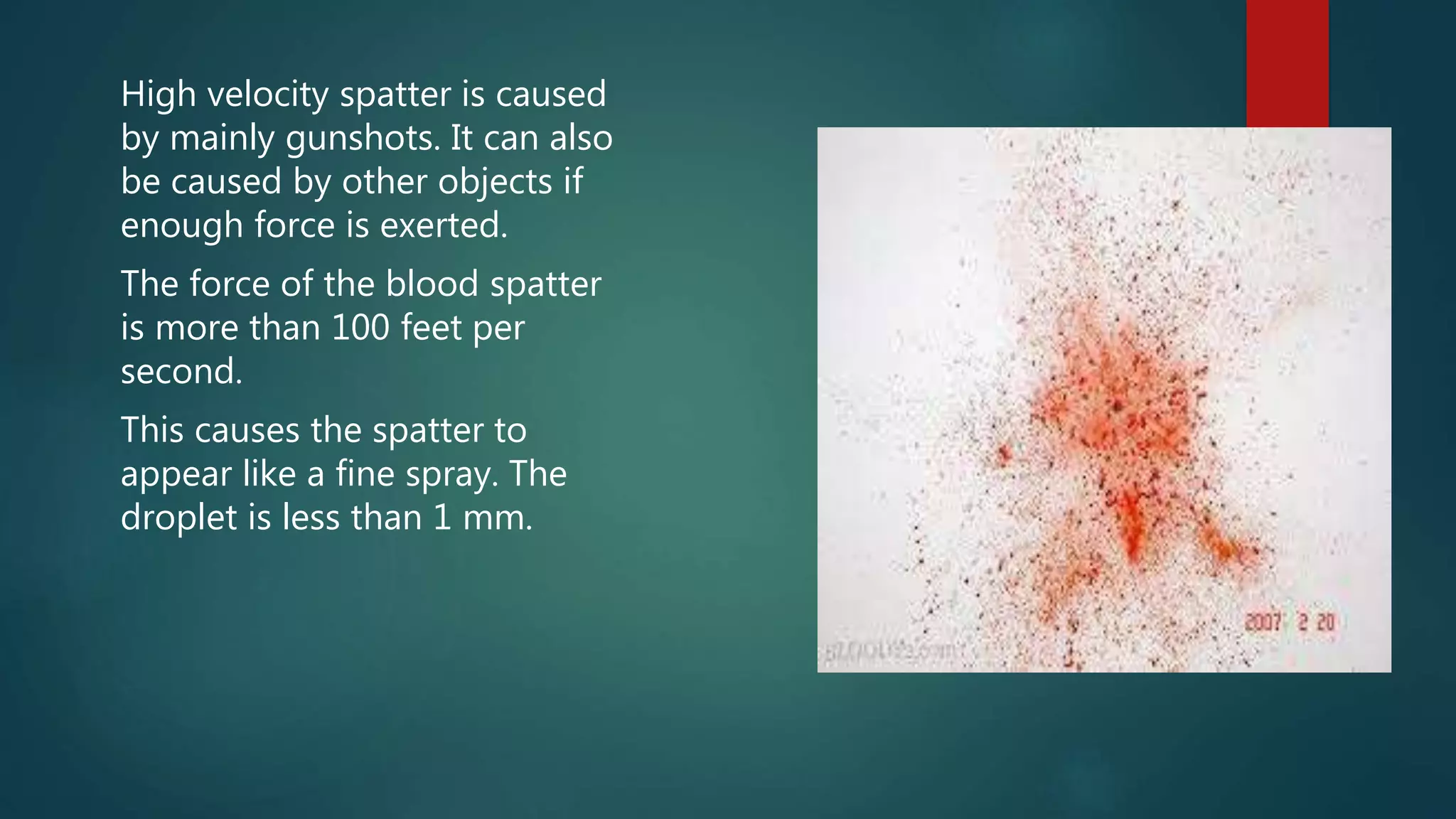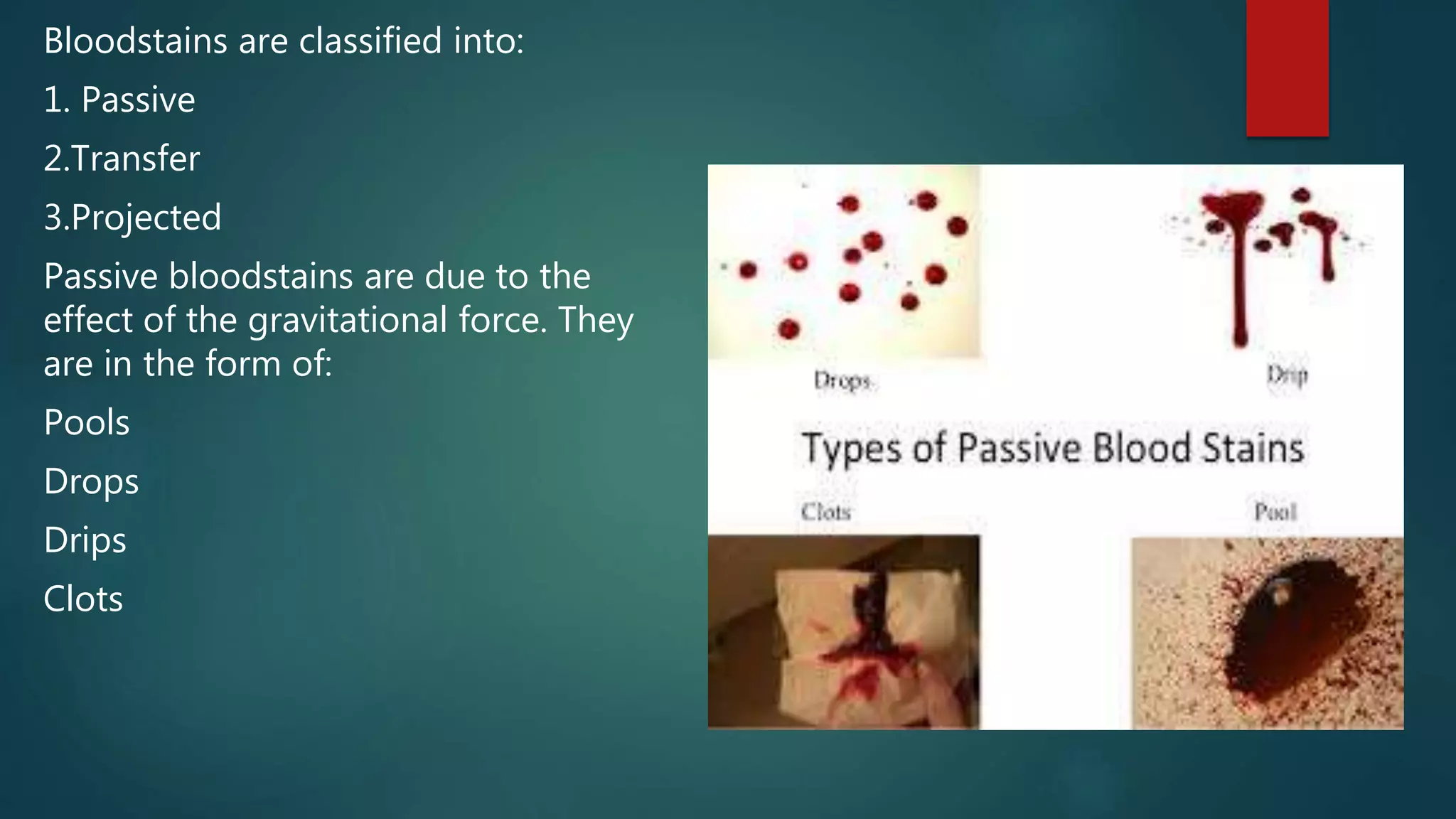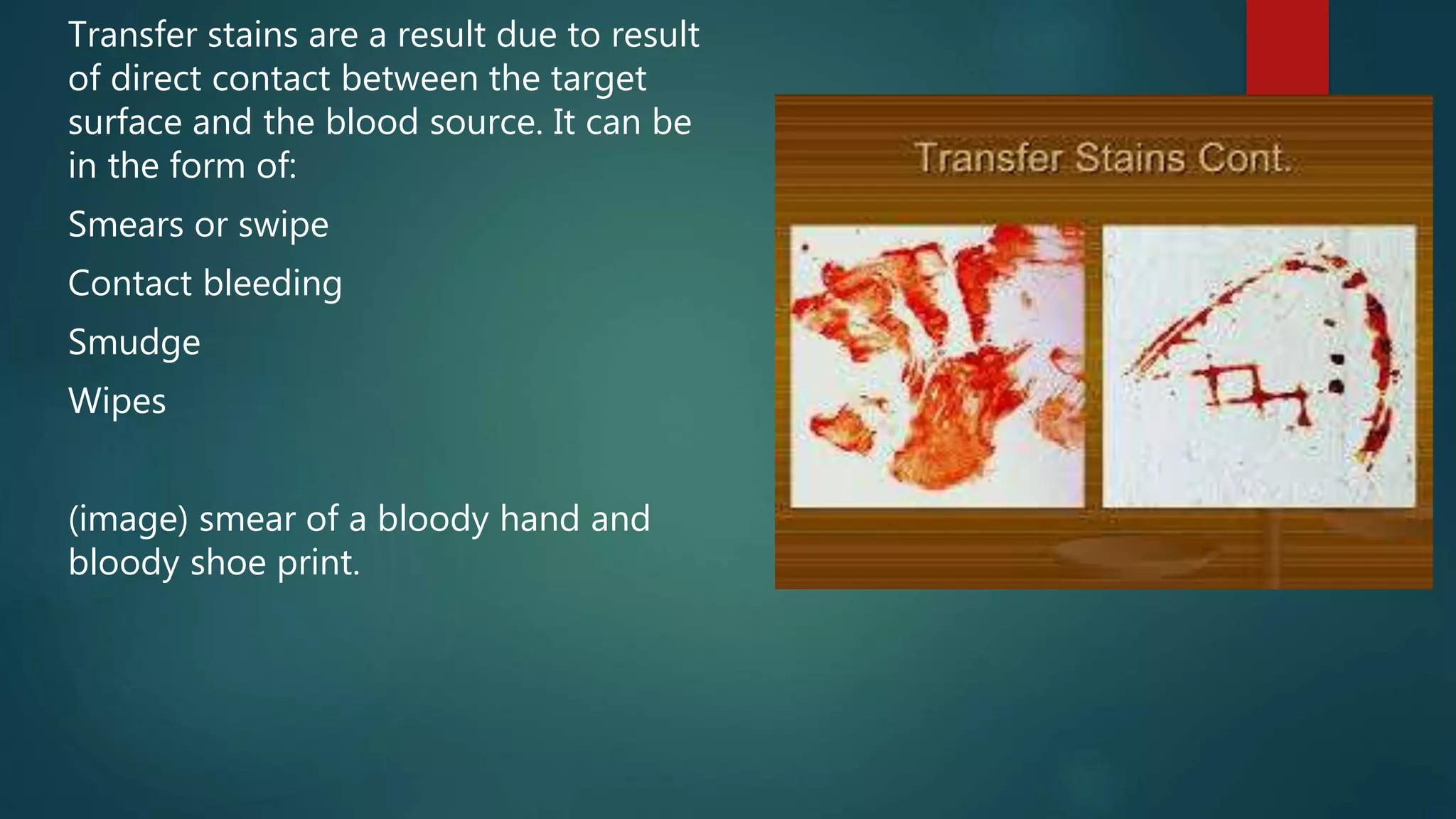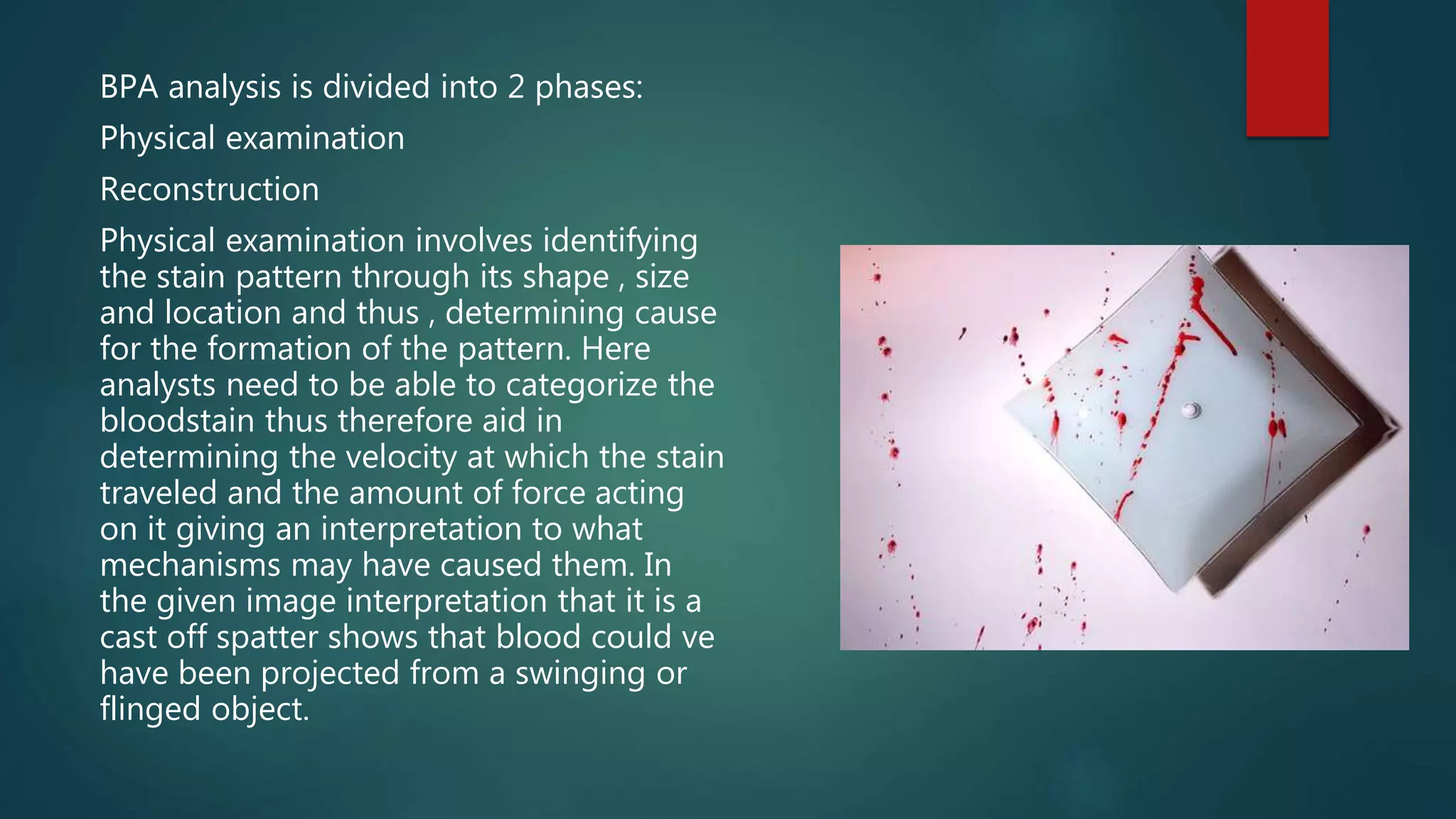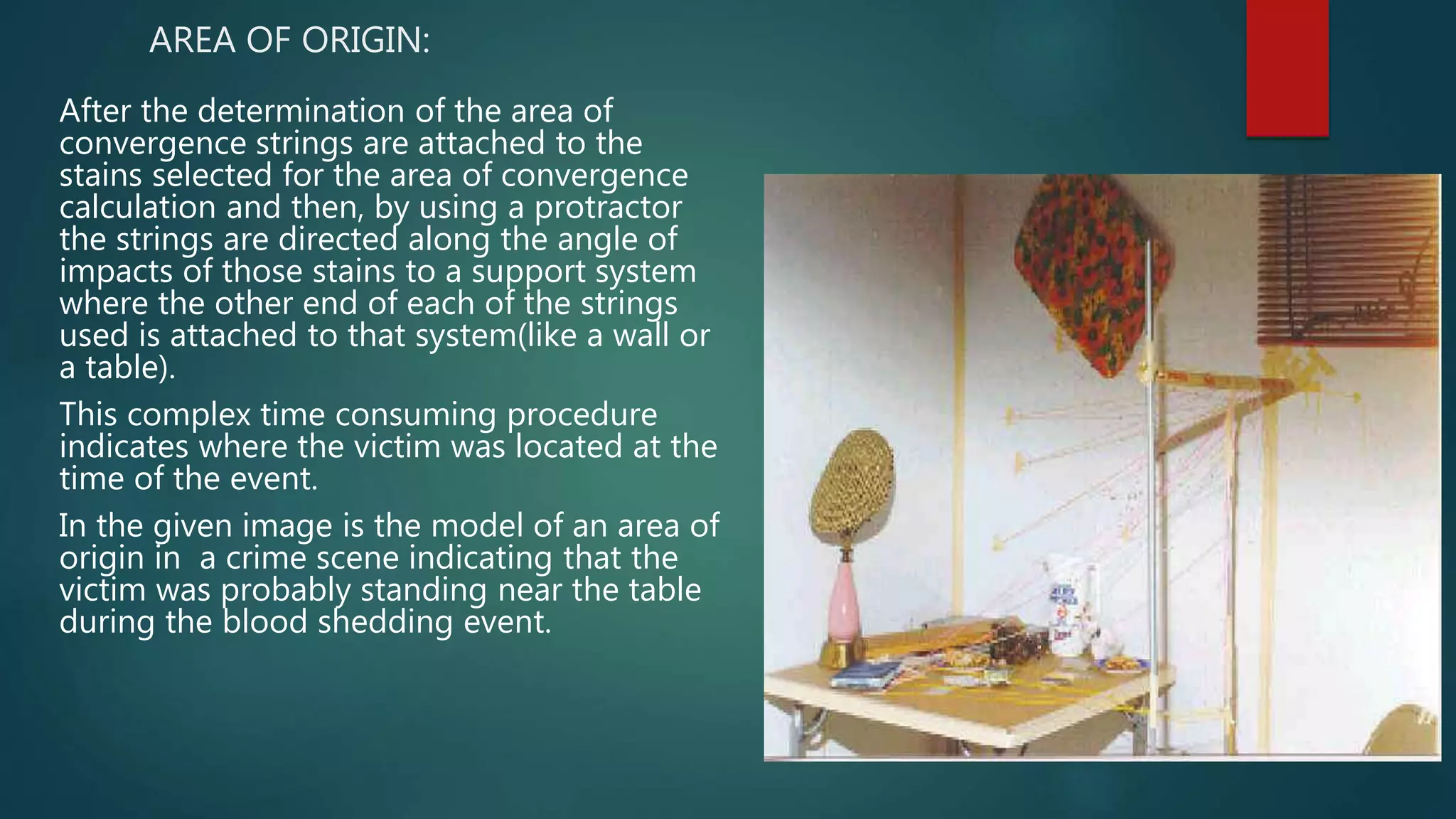The document discusses bloodstain pattern analysis (BPA), which analyzes bloodstains at crime scenes to reconstruct events. BPA has been used since the late 19th century. Stains are classified by velocity (low, medium, high) and morphology (passive, transfer, projected). Analysts examine stain patterns to determine the area of convergence and origin to deduce the positions of victim and assailant. BPA supports other forensic evidence and can refute witness statements, but does not determine all crime details on its own.



